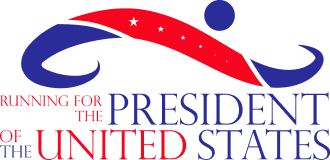Cost of living
Reducing the cost of living for Americans is a multifaceted yet crucial objective that requires collaboration across various sectors of society. Here are key strategies that could contribute to achieving this goal:
- **Affordable Housing**:
– **Boost Housing Supply**: Implement policies to increase the construction of affordable housing units through zoning reforms, tax incentives, and public-private partnerships.
– **Enhance Rent Control and Assistance**: Expand rent control measures and provide greater support for low-income renters through subsidies and housing vouchers.
- **Healthcare Costs**:
– **Pursue Healthcare Reform**: Implement reforms to lower healthcare costs, including price transparency, negotiating drug prices, and promoting preventative care.
– **Expand Public Options**: Increase access to public health insurance options to make healthcare more affordable and accessible.
- **Education**:
– **Support Tuition-Free or Reduced-Cost College**: Back initiatives for tuition-free community college and reduced-cost public university education.
– **Implement Student Loan Forgiveness**: Introduce programs for student loan forgiveness to alleviate financial burdens on graduates.
- **Wages and Employment**:
– **Raise Minimum Wage**: Increase the federal minimum wage to align with the current cost of living.
– **Invest in Job Training Programs**: Support job training and apprenticeship programs to equip workers with skills for higher-paying jobs.
- **Energy and Utilities**:
– **Promote Energy Efficiency**: Encourage energy efficiency programs and renewable energy sources to reduce utility expenses.
– **Provide Subsidies and Assistance**: Offer subsidies or financial aid to low-income households to help with utility costs.
- **Transportation**:
– **Expand Public Transit**: Invest in and expand public transportation options to lower commuting expenses.
– **Support Electric Vehicles**: Incentivize the adoption of electric vehicles and develop charging infrastructure to reduce long-term transportation costs.
- **Food Costs**:
– **Promote Local Agriculture**: Encourage local farming and farmers’ markets to cut transportation costs and boost local economies.
– **Strengthen SNAP and Food Assistance**: Enhance food assistance programs like SNAP to ensure access to affordable, nutritious food for low-income families.
- **Tax Policies**:
– **Implement Progressive Taxation**: Introduce progressive tax policies to alleviate the burden on lower and middle-income households.
– **Expand Tax Credits**: Extend tax credits like the Earned Income Tax Credit (EITC) and Child Tax Credit (CTC) to provide direct financial relief to working families.
- **Consumer Protections**:
– **Regulate Predatory Practices**: Enforce regulations to safeguard consumers from predatory lending and unfair practices.
– **Enhance Financial Literacy**: Strengthen financial literacy programs to empower individuals to make informed financial decisions.
By addressing these areas comprehensively, policymakers can work towards reducing the cost of living and enhancing the quality of life for many Americans. Which of these strategies do you believe would yield the most immediate impact?

